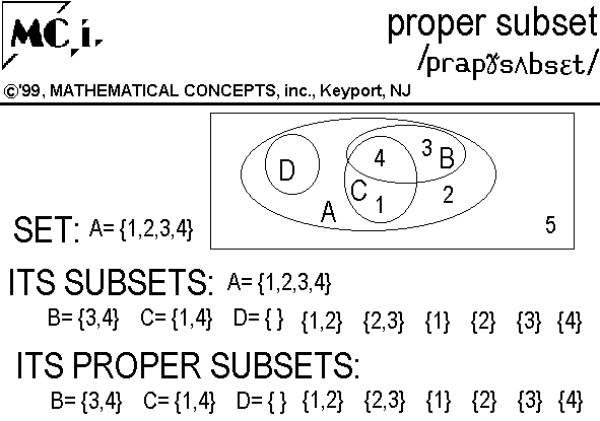Basic Introduction Proper Subsets
Basic Introduction Proper Subsets:If we look at the definition of subsets and let our mind wander a bit, we come to a weird conclusion.
Let A be a set. Is every element in A an element in A? (Yes, I wrote that correctly.)
Well, um, yes of course, right?
Well, um, yes of course, right?
So wouldn’t that mean that A is a subset of A?
This doesn’t seem very proper, does it? We want our subsets to be proper. So we introduce (what else but) proper subsets.
A is a proper subset of B if and only if every element in A is also in B, and there exists at least one element in B that is not in A.
This little piece at the end is only there to make sure that A is not a proper subset of itself. Otherwise, a proper subset is exactly the same as a normal subset.
Example: {1, 2, 3} is a subset of {1, 2, 3}, but is not a proper subset of {1, 2, 3}.
Example: {1, 2, 3} is a proper subset of {1, 2, 3, 4} because the element 4 is not in the first set.
Example: {1, 2, 3} is a proper subset of {1, 2, 3, 4} because the element 4 is not in the first set.
If A is a proper subset of B, then it is also a subset of B.


Comments
Post a Comment